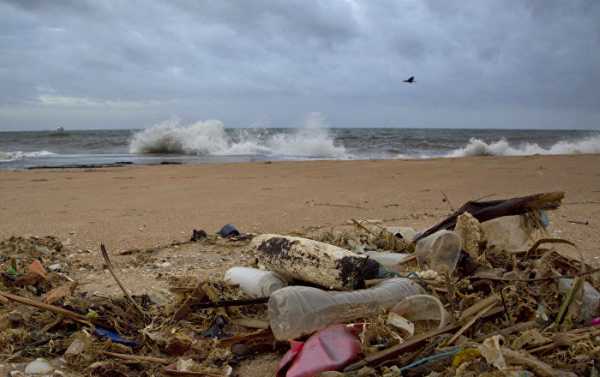
The researchers accidentally created a plastic-eating enzyme, which potentially can be used to solve one of the world’s largest environmental problems – pollution of plastic. More than 8 million tons of plastic dumped into the oceans every year, according to the nonprofit organization the Foundation the plastic oceans.
Scientists from the British University of Portsmouth and the U.S. Department of energy laboratory National renewable energy (nrel) is mistakenly produced the enzyme in the study of natural enzyme discovered several years ago in Japan center for recycling.
According to Tuesday’s press release of the University of Portsmouth, Japanese natural enzyme, Ideonella sakaiensis 201-F6 (also known as PETase enzyme) could break down polyethylene terephthalate, PET, which was patented as the plastic in the 1940-ies.
While the researchers were studying an enzyme PETase, they accidentally engineered another enzyme that broke down the plastic pet even better than the natural enzyme they investigated in the first place.
“We were hoping to spot patterns to help protein engineering, but we went ahead and accidentally engineered enzyme with improved performance on breaking down these plastics,” said NREL senior researcher Gregg Beckham.
“Serendipity often plays an important role in fundamental scientific research and discovery is no exception,” said John thus at the University of Portsmouth, who also took part in the study.
Using a synchrotron particle accelerator, researchers, in collaboration with diamond light Source in UK, used intense beams of x-rays 10 billion times brighter than the sun, to view individual atoms that make up PETase.
“Diamond light Source has recently created one of the most advanced x-ray beam channel is already in the world and having access to the object allowed us to see 3-d atomic structure PETase in great detail. Being able to see the inner workings of this biological catalyst provided us drawings to design faster and more efficient enzyme,” thus explained.
The researchers then worked with computer simulation scientists from the University of South Florida and the University of Campinas in Brazil and found that PETase has a similar structure to cutinase, another enzyme that can also degrade the pet, but has several different functions, which also allows him to break down synthetic polymers in addition to natural polymers.
The researchers then mutated PETase so it was more of cutinase. The mutant PETase was better than degrading animal than natural PETase.
The findings were published Monday in the proceedings of the National Academy of Sciences journal. However, researchers are still working on further changes of the mutant PETase, so that it can break down plastics at an increasingly rapid pace, according to the University of Portsmouth.
“Although the improvement is modest, this unexpected finding suggests that there is scope for further improvement of these enzymes, bringing us to a recycling solution for the growing mountains of discarded plastics,” so noted, according to the University of Portsmouth press release.
Sourse: sputniknews.com






